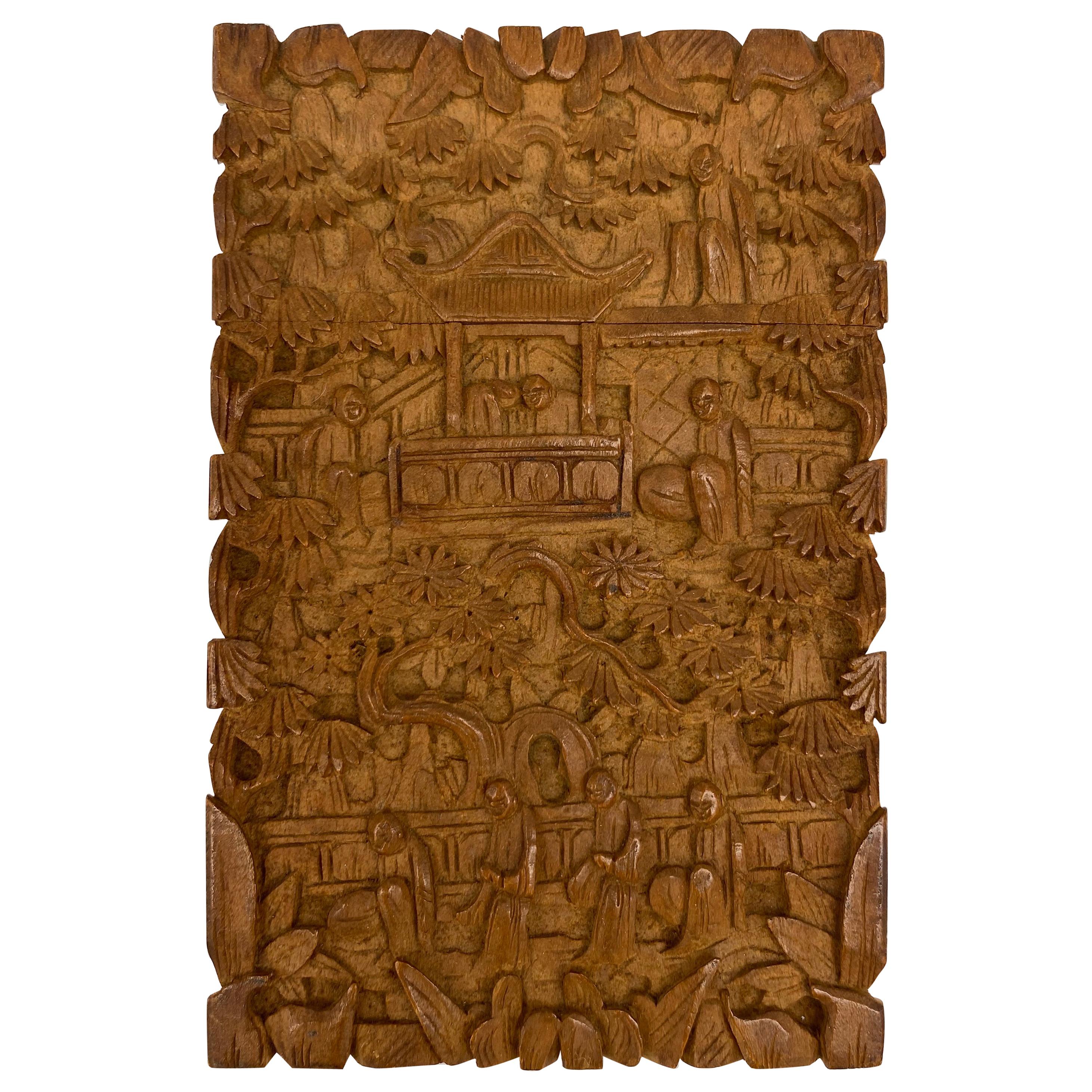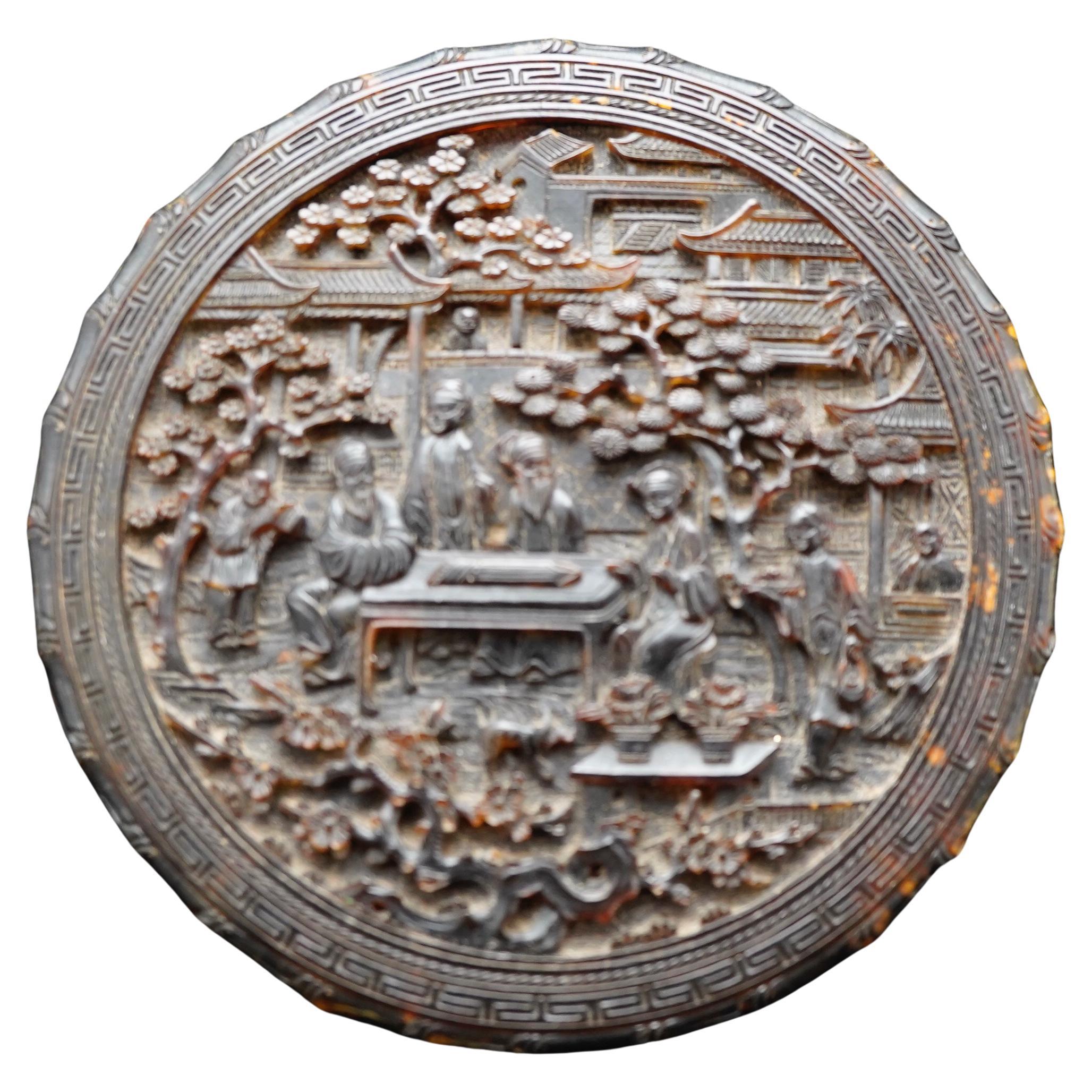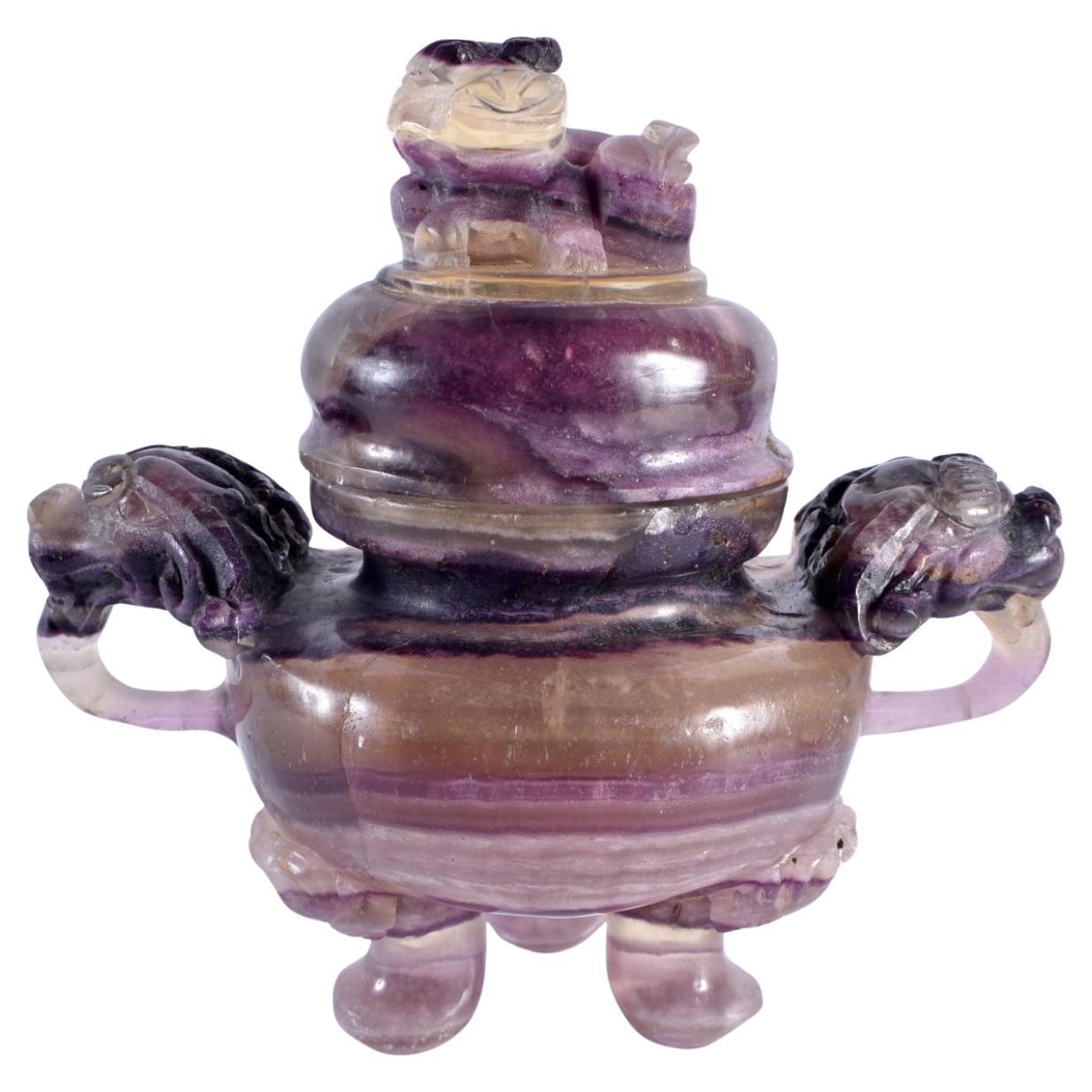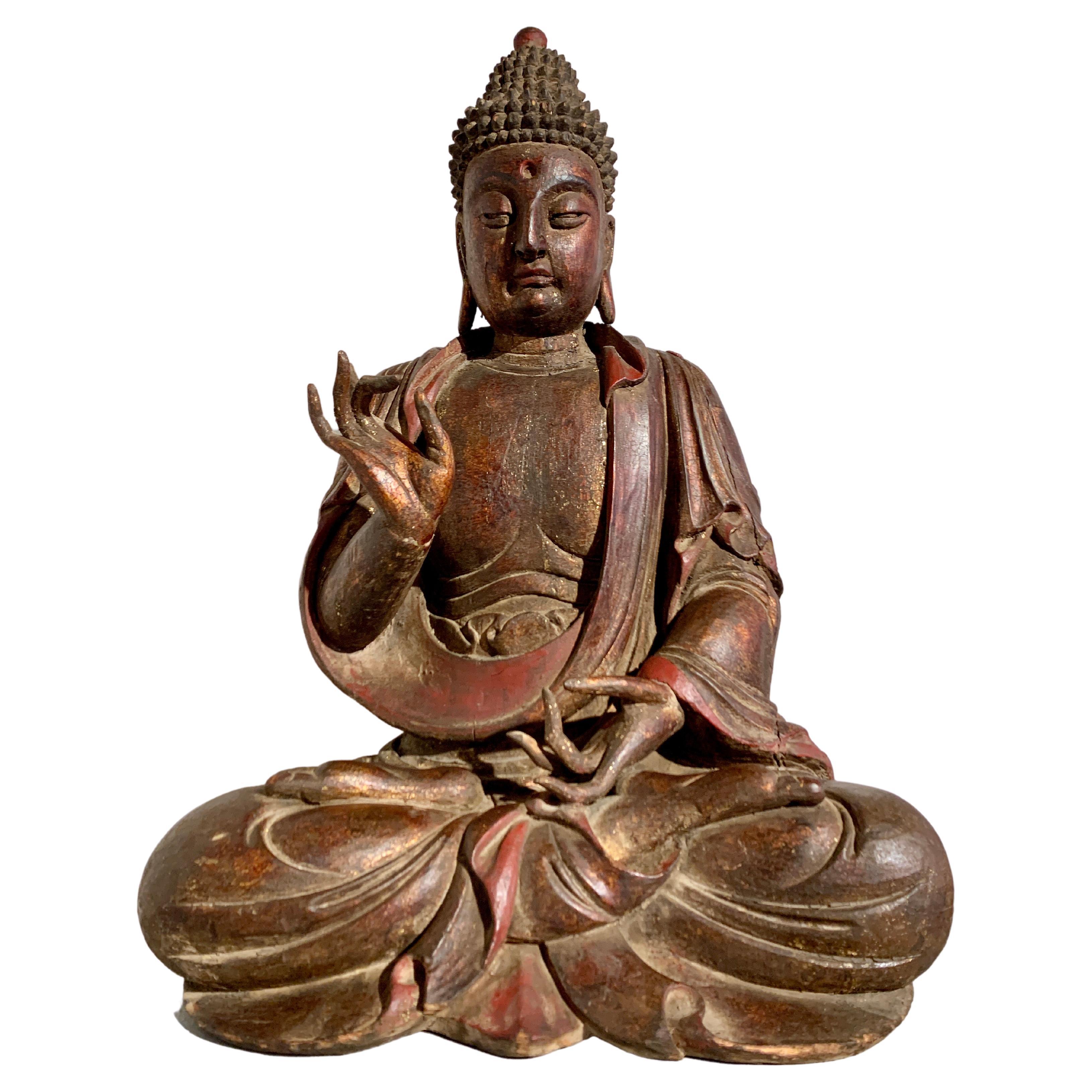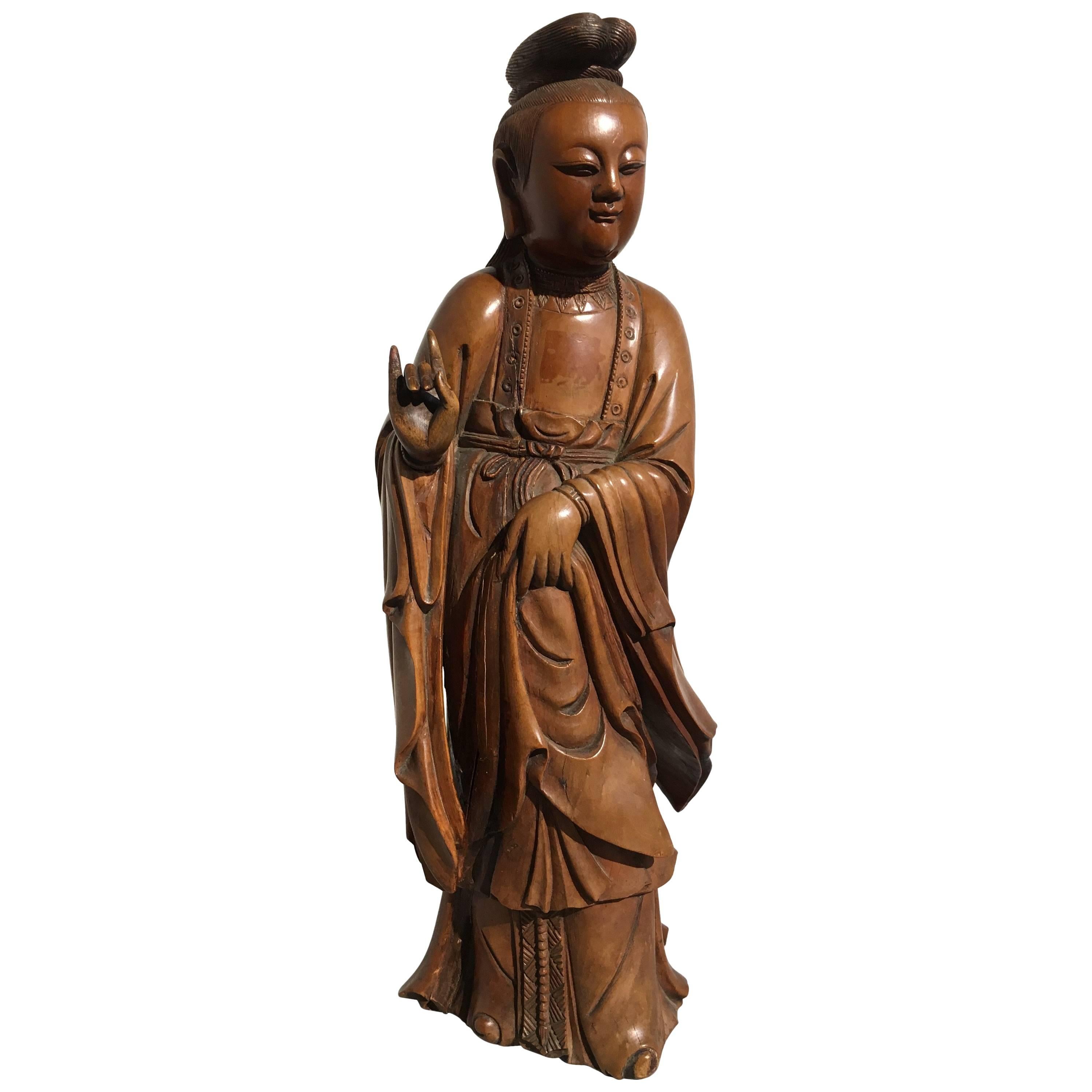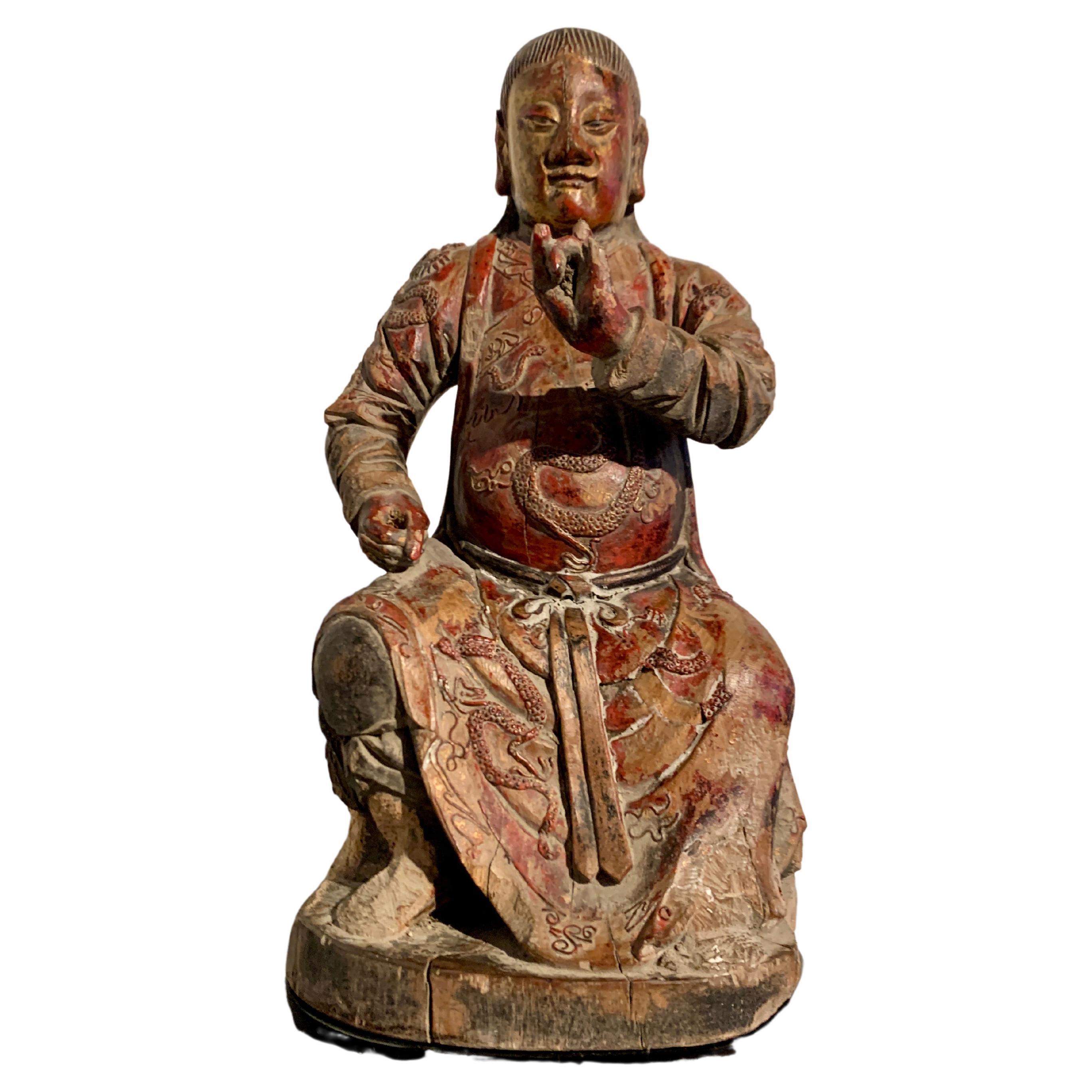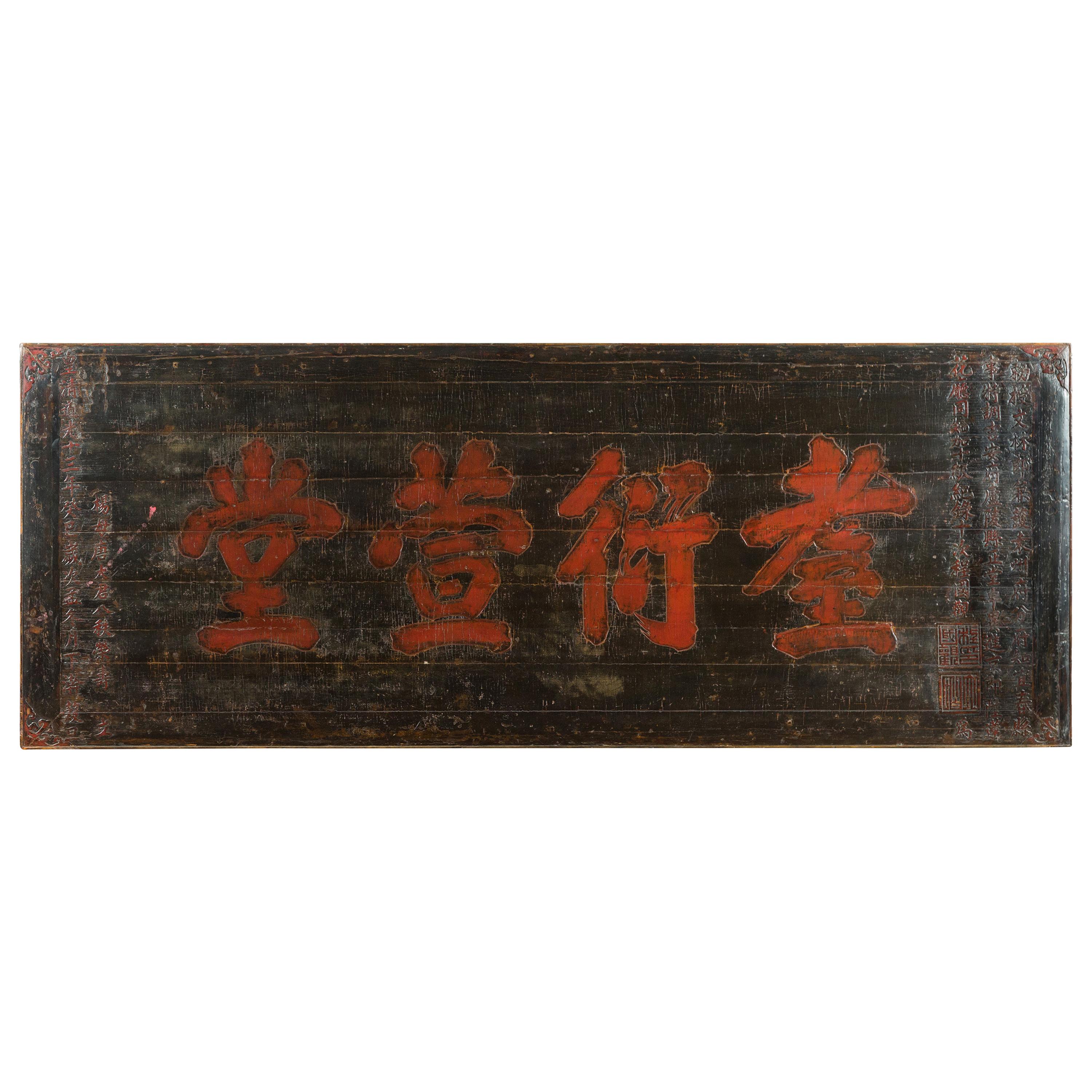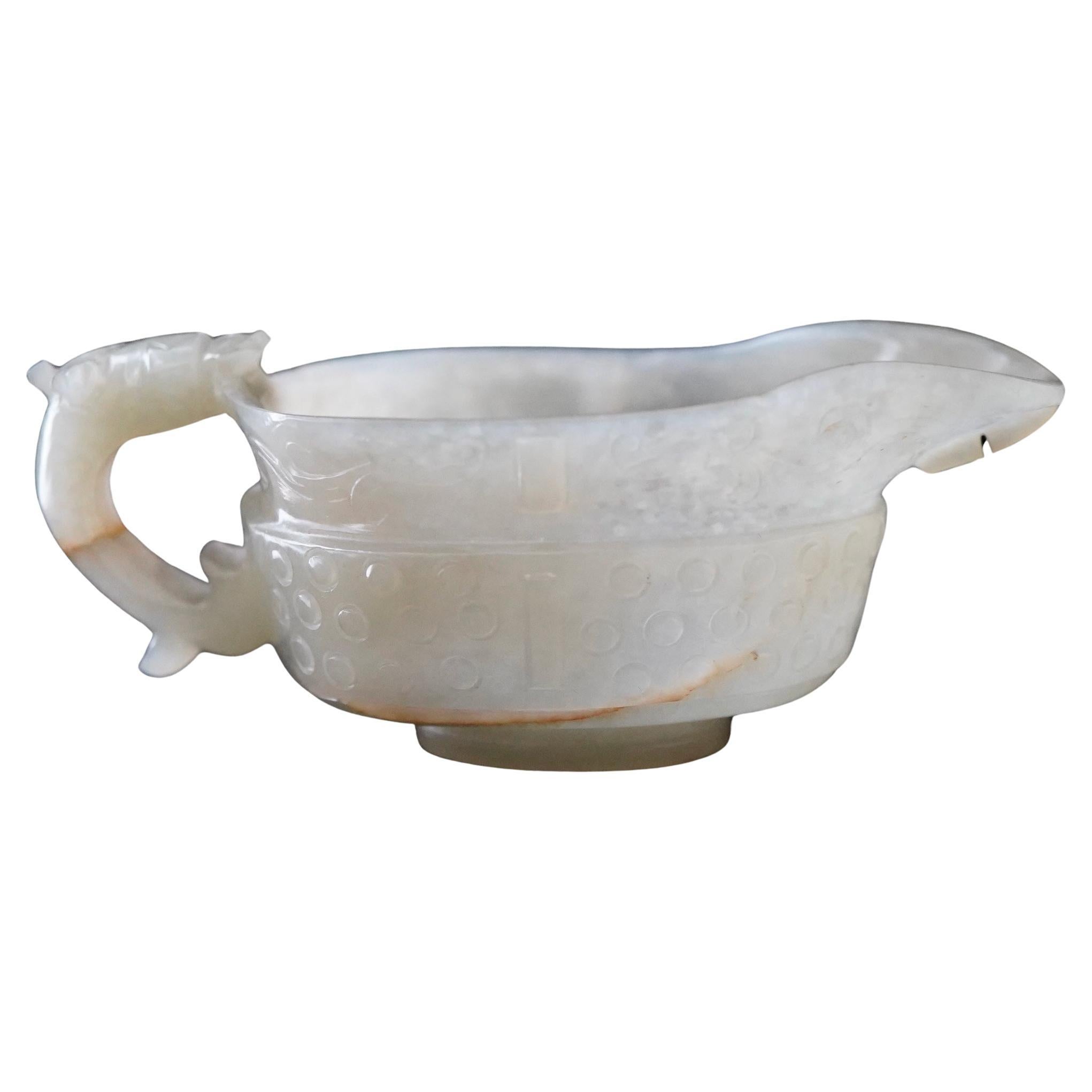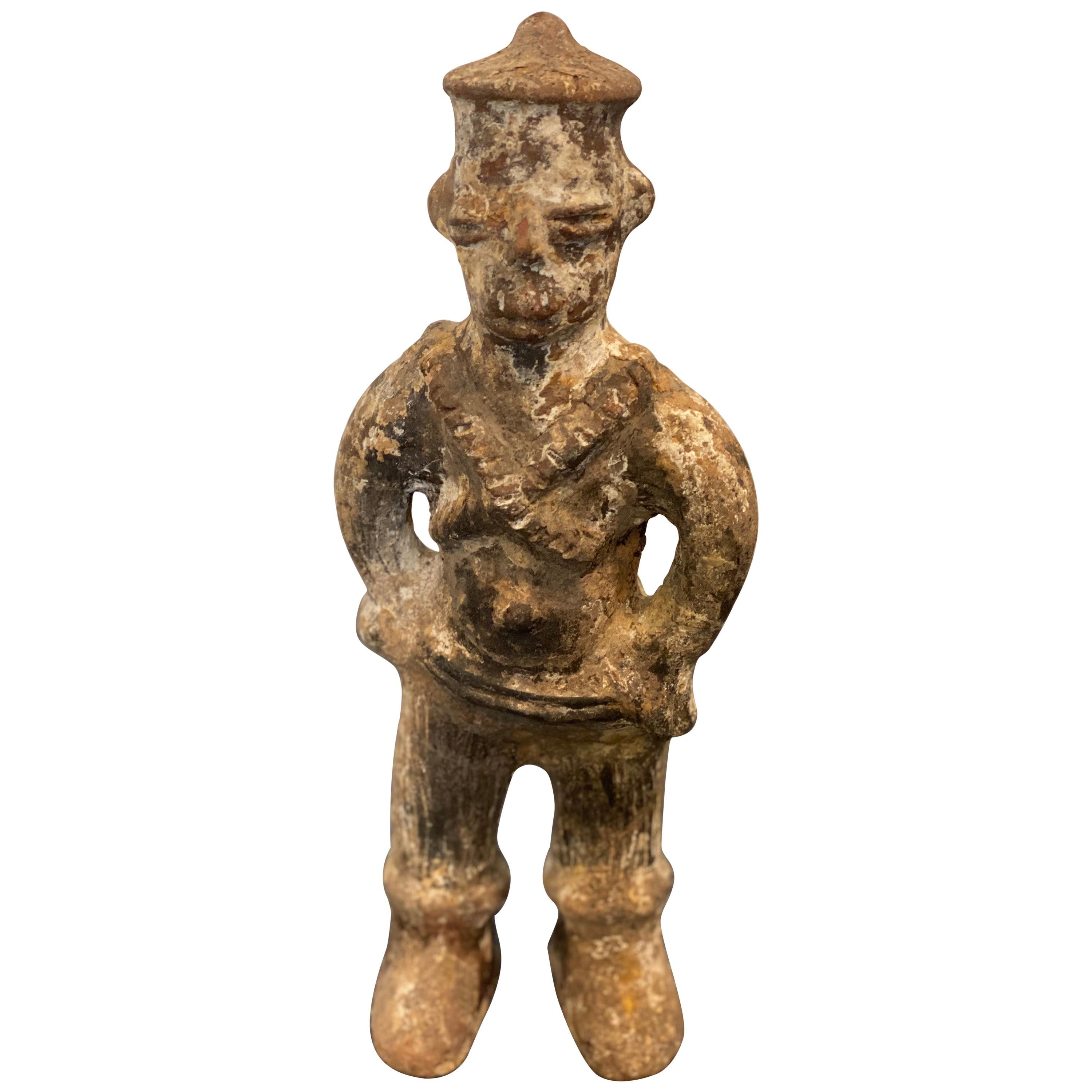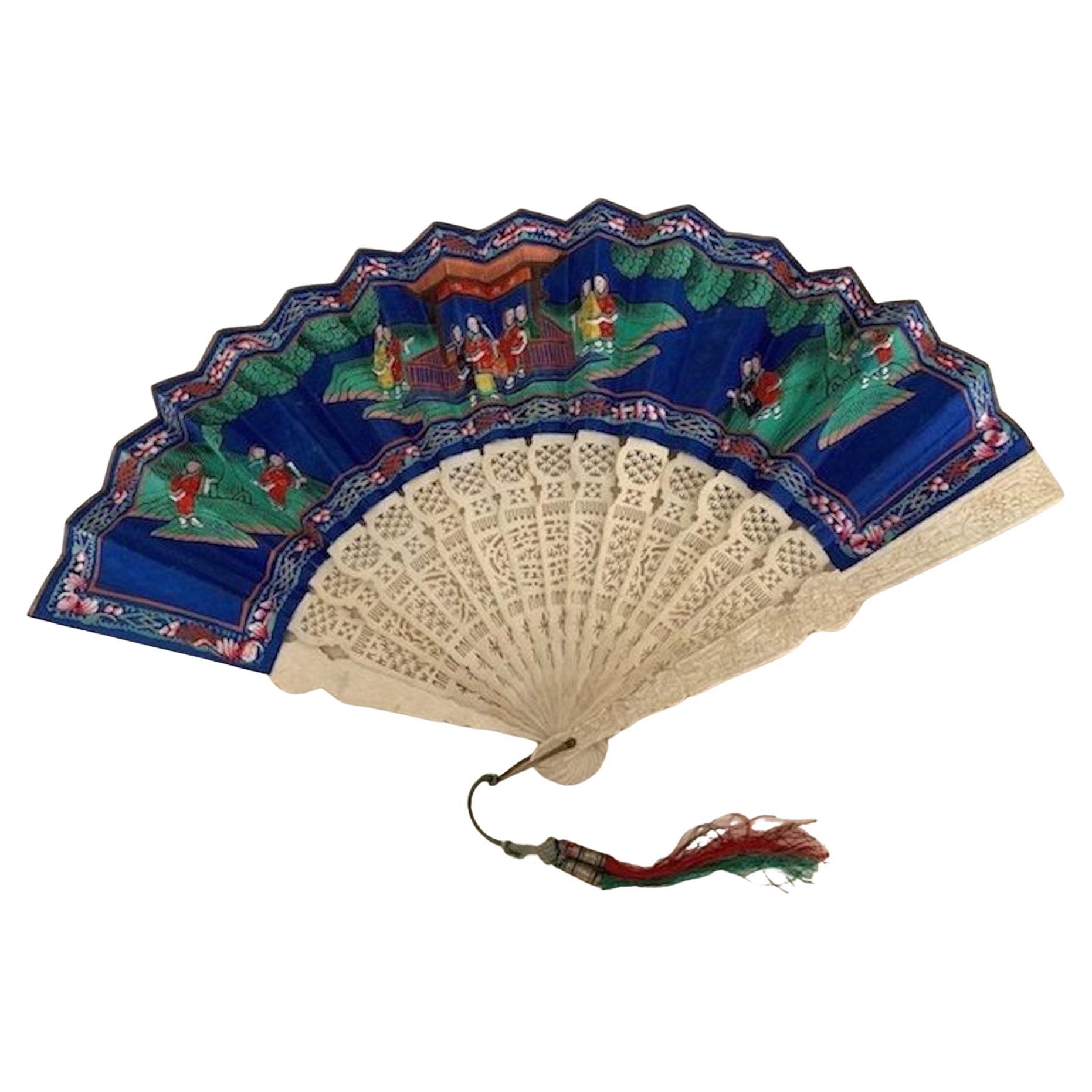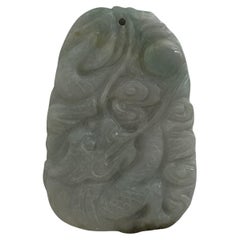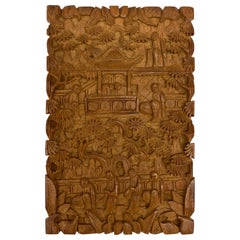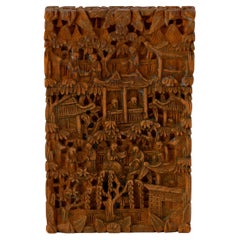
Chinese Qing Finely Carved Boxwood Cantonese Canton Card Case 19th Century
View Similar Items
1 of 6
Chinese Qing Finely Carved Boxwood Cantonese Canton Card Case 19th Century
About the Item
- Dimensions:Height: 0.6 in (1.5 cm)Width: 2.76 in (7 cm)Depth: 4.34 in (11 cm)
- Materials and Techniques:
- Period:
- Date of Manufacture:19th century
- Condition:Wear consistent with age and use.
- Seller Location:Nottingham, GB
- Reference Number:1stDibs: LU9003235463502
You May Also Like
- Chinese Jade Jadeite / Nephrite Pendant finely hand carved dragon, 19th C QingLocated in Lincoln, LincolnshireThis is a very good Chinese Jade, Jadeite / Nephrite stone pendant that we date to the early 19th Century, Qing period. The jade has various colours within the stone, mainly a very...Category
Antique 19th Century Chinese Qing Sculptures and Carvings
MaterialsJade
- 19th Century Chinese Hand Carved Wood CaseLocated in Brea, CA19th century Chinese hand carved wood case with intricately designed carvings of people, villages, and foliage.Category
Antique 19th Century Chinese Qing Sculptures and Carvings
MaterialsWood
- Chinese Tortoise Shell Finely Carved Box Canton 1840Located in Gainesville, FLChinese tortoise shell finely carved box, Canton circ 1840, The box is carved with court scenes on both top and bottom. Finely executed edge with greek key pattern and scenes. THIS I...Category
Antique 1840s Sculptures and Carvings
MaterialsTortoise Shell
- Chinese Carved Boxwood Figure of Guanyin, Mid-Qing DynastyLocated in Austin, TXA sublime Chinese carved boxwood figure of the Bodhisattva of Compassion, Avalokiteshvara, called Guanyin in Chinese, mid-Qing dynasty. The an...Category
Antique Late 18th Century Chinese Qing Sculptures and Carvings
MaterialsBoxwood
- A Chinese amethyst carved censor and cover, Qing Dynasty, 19th centuryLocated in London, GBA Chinese amethyst carved censor and cover, Qing Dynasty, 19th century. the rounded body carved with a pair of dragon mask handles, raised on three paw feet, the domed cover surmoun...Category
Antique 19th Century Chinese Sculptures and Carvings
MaterialsAmethyst
- Large Chinese Carved and Lacquered Buddha, Qing Dynasty, 19th CenturyLocated in Austin, TXA large and magnificent near life-sized Chinese carved and lacquered wood figure of a Buddha, Qing Dynasty, 19th century or earlier, southern China. The figure likely represents one of the Five Tathagatas, also known as Dhyani Buddhas or Wisdom Buddhas. More specifically, either Amitabha or Amoghasiddhi. Amitabha is the Buddha of infinite light, and represents the wisdom of observation and recognition. Amoghasiddhi is the Buddha of accomplishment, and represents the wisdom of perfected practices. The size and scale of the Buddha indicates it was made for temple worship. The large Buddha is portrayed seated in vajrasana, or full lotus position, with the soles of both feet facing up. His elegant hands, with impossibly long and slender fingers, perform shuni mudra, the gesture of bestowing patience. His right arm is bent at the elbow, the right hand raised to heart level. The left arm resting gently in his lap, the left hand at navel level. The Buddha is dressed in voluminous robes that wrap around his shoulders and body, and tied at the waist. The heavy fabric draping and pooling elegantly all around his robust body. His broad chest and right arm exposed. The Buddha's face is both solemn and beatific - his expression seeming to change depending on the angle of view. The most notable feature of his face is the large urna to the center of his forehead, set between a pair of painted, high arching brows over heavily lidded almond shaped eyes. A strong nose is set above a small mouth pursed in an ever so slight smile. Long pendulous earlobes touch his shoulders. The Buddha's hair arranged in the typical fashion, with "spikes" representing tight curls. A prominent ushnisha rises from the crown of his head, covered by more hair, and topped with a rounded protuberance. The Buddha is constructed from several blocks of wood, joined, carved and lacquered a deep red-brown with gold flecks...Category
Antique 19th Century Chinese Qing Sculptures and Carvings
MaterialsWood
Recently Viewed
View AllMore Ways To Browse
Chinese Art Rock
Tall Asian Display Stand
Small Bronze Dragon Sculptures
Burmese Shrine
Thailand Demon
Antique Carved Soapstone Vase
Garuda Carving
Seven Lucky Gods
Used Butsudan
Gilt Bronze Monk
Jade Bi Pendant
Han Dynasty Lady
Japanese Bronze Monkey
Dancing Apsara
Fox Shrine
Japanese Wooden Dolls Vintage
Asian Warrior Statue
Bamboo Crescent

